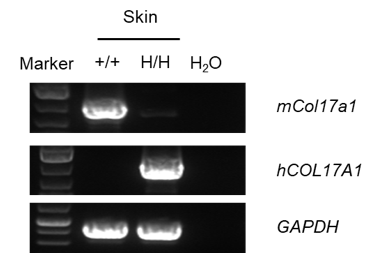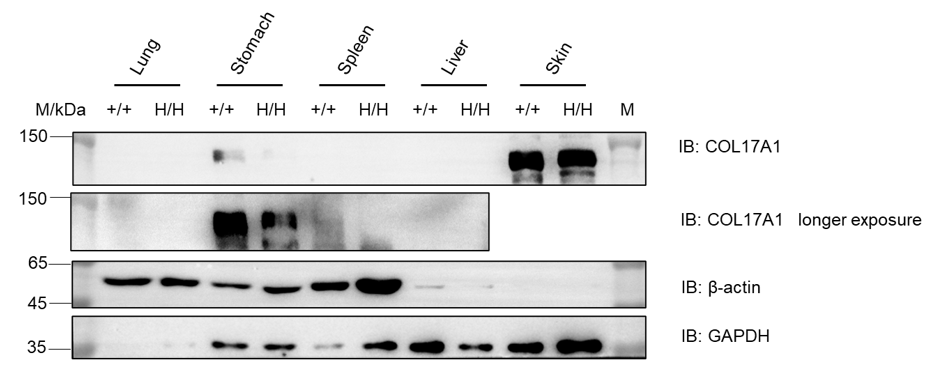B-hCOL17A1 mice
| Strain Name |
C57BL/6-Col17a1tm2(COL17A1)Bcgen/Bcgen
|
Common Name | B-hCOL17A1 mice |
| Background | C57BL/6 | Catalog number |
112556 |
|
Related Genes |
BA16H23.2, BP180, BPA-2, BPAG2, ERED, JEB4, LAD-1 |
||
|
NCBI Gene ID |
1308 | ||
Background: Collagen XVII (COL17A1) is a transmembrane protein that functions as a cell-matrix adhesion molecule and is highly expressed in tissues with significant epithelial components, such as the skin. COL17A1 is crucial for the formation of the basement membrane and plays a role in cell movement, adhesion, and differentiation. COL17A1 can promote the clearance of senescent cells and delay aging. Transgenic COL17A1 can reverse alopecia in aging mice and inhibit hair loss. Furthermore, literature reports that COL17A1 is a key regulatory factor for the clonal expansion of transformed cells in stratified epithelia, making it a potential target for early diagnosis and preventive treatment of precancerous lesions.
Application: The humanized mice can be used for aging-related research.
Model validation: Mouse Col17a1 mRNA was only detectable in wild-type C57BL/6JNifdc mice. Human COL17A1 mRNA was exclusively detectable in homozygous B-hCOL17A1 mice. COL17A1 protein was detectable in skin and stomach in both wild-type C57BL/6JNifdc and homozygous B-hCOL17A1 mice, as the antibody was cross-reactive between human and mouse.
mRNA expression analysis

Strain specific analysis of COL17A1 mRNA expression in wild-type C57BL/6JNifdc mice and B-hCOL17A1 mice by RT-PCR. Skin RNA were isolated from wild-type C57BL/6JNifdc mice (+/+) and homozygous B-hCOL17A1 mice (H/H), then cDNA libraries were synthesized by reverse transcription, followed by PCR with mouse or human COL17A1 primers. Mouse Col17a1 mRNA was only detectable in wild-type mice. Human COL17A1 mRNA was exclusively detectable in homozygous B-hCOL17A1 mice.

Western blot analysis of COL17A1 protein expression in wild-type C57BL/6JNifdc mice and homozygous B-hCOL17A1 mice by WB. Various tissues were collected from wild-type C57BL/6JNifdc mice (+/+) and homozygous B-hCOL17A1 mice (H/H), and then analyzed by western blot with anti-COL17A1 antibody (abcam, ab184996). 40 μg total proteins were loaded for western blotting analysis. GAPDH and β-actin were detected as internal control. COL17A1 was detectable in skin and stomach in both wild-type and homozygous B-hCOL17A1 mice, as the antibody was cross-reactive between human and mouse. M, marker.









